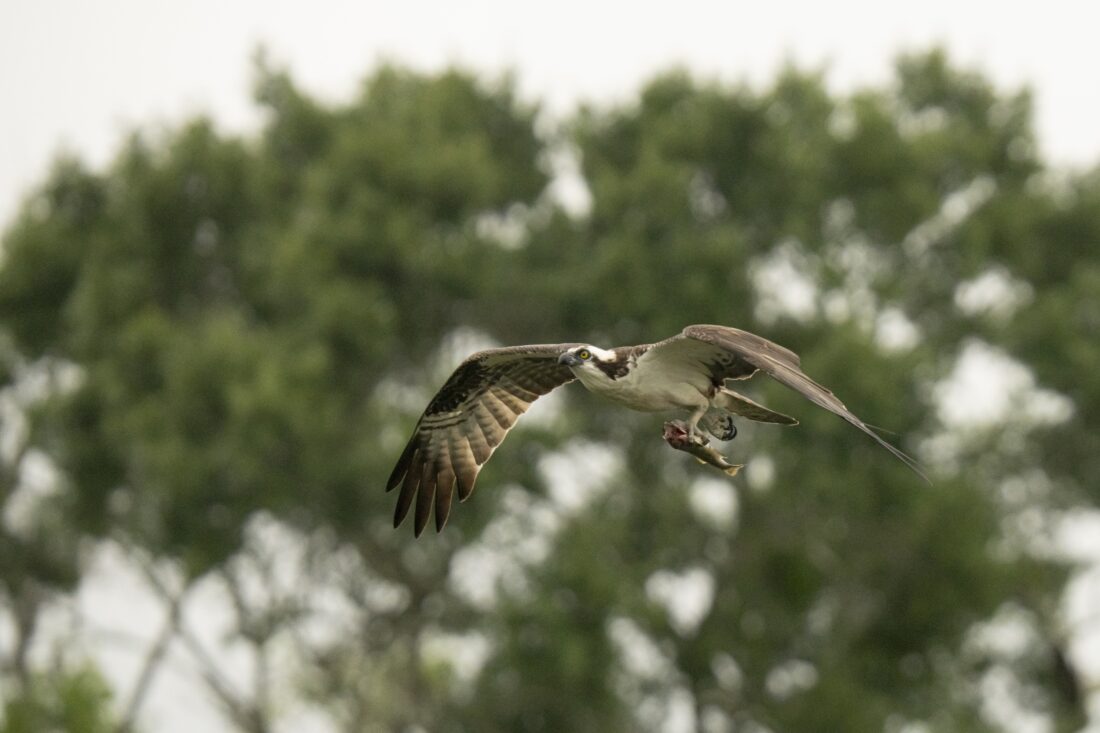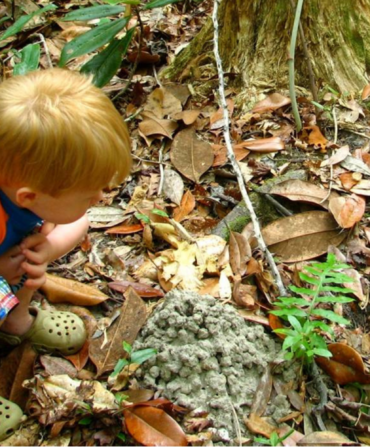Fall birding is challenging fun for hobbyists. Many birds’ distinctive breeding plumage molts into dull feathers. Their warbled songs turn into chips. And as winter approaches, lengthier perching times transition to quick movements for scarcer food resources. For birdwatchers, IDing species may take more effort and sharper eyes, but walking among bushes, trees, and meadows at any of these seven Southern locales on a crisp fall day far surpasses doom-scrolling or sitting on the couch. Even if you’re having a tough time locating that faint off-white streak on a flitting sparrow’s nape, you’re still out in nature, and that’s plenty fine.
Atchafalaya Loop, Louisiana

I scored my best birding day ever in Louisiana, when eighty-plus species dropped from the sky during a spring fallout on Grande Isle. Along coastlines, migrating birds “fall out,” or land in great numbers, during or after stormy weather brought by cold fronts, according to the Loyola University Institute of Environmental Communication. So any time there’s a cold weather push, you’re even more likely to see birds in the wild coastal South. Part of America’s Wetland Birding Trail, an astounding chart slicing through twenty-two parishes, the Atchafalaya Loop conveys the binoculared along bayou shorelines and into bottomland hardwood forests. Part of the loop, the massive Indian Bayou National Wildlife Refuge sits in the middle of the Mississippi Flyway, drawing most waterfowl and heron species, plenty of migratory songbirds, and at least five different woodpeckers.
Seven Islands State Birding Park, Tennessee
Nearly three dozen warbler species have been spotted in Seven Islands State Birding Park, a sprawling greenspace with diverse habitats transected by nine miles of gentle trails, located just outside Knoxville. The grasslands host grasshopper, swamp, and seven other sparrows that overwinter here, providing an excellent opportunity to work your observation skills as you distinguish stripes from streaks and crown markings from distinctive caps. A total of 220 species have been identified throughout the year in this mixed-vegetation aquatic ecosystem, which is also a popular migration stopover site.
Aransas National Wildlife Refuge, Texas
This haven along the Texas Gulf coast is perhaps best known for providing the winter habitat of the last wild flock of whooping cranes. But there is still much to explore throughout the year, as more than four hundred avian species have been identified in this critical and varied environment. Kestrels, merlins, and loggerhead shrikes patrol the grasslands, while sandpipers, curlews, and plovers scour the sand. Songbirds, many of which recharge before an eighteen-hour flight across the Gulf, hunker down in the oak trees. Be sure to pause at the visitor’s center to view the latest bird checklist, and mark your calendar for 2026; in February each year, the refuge plays host to the Whooping Crane Festival with speakers, boat tours, and ample chances to revel in the company of the stately birds.
Tarkiln Bayou Preserve State Park, Florida
Part of the Great Florida Birding Trail, the 4,200-acre Tarkiln Bayou Preserve State Park is best known for its habitat that supports a quartet of rare pitcher plant species. But where there are plants (even carnivorous ones), there are birds. Visitors can spot several warbler species in autumn transit; common yellowthroat, pine, palm, and prairie warblers are known to overwinter here, the latter two providing a great excuse to delve deeply into your field guide to distinguish one tail-wagging species from the other. These warblers aren’t the only snowbirds; yellow-bellied sapsuckers, brown pelicans, and pied-billed grebes, among other diverse species, spend winters here.
Pascagoula River Audubon Center, Mississippi

When I taught ornithology to middle school students in the early aughts, I discovered some students were more interested in dissecting owl pellets than IDing their first great blue heron. Fortunately, many nature preserves offer comprehensive interpretive centers, terrific living labs where visitors of all ages can nurture a lifelong passion. Protecting more than 35,000 acres, the Pascagoula River Audubon Center offers a modern education center, workshops, and self-guided kayak tours. Along the Mississippi Coastal Birding Trail, more than 350 bird species have appeared during the fall migration in Mississippi’s coastal counties, a vital stopover point on the Mississippi Flyway.
Grandfather Mountain State Park, North Carolina

I’m sure a few readers are asking, What about the raptors? and for good reason. Hawk watching in autumn is the highlight of the birding year for many. Not only do most birds of prey follow predictable routes where kettles (large raptor congregations) ride the thermals along ridgelines, but they also migrate during daylight hours. Imagine watching almost five thousand broad-wing hawks soar above the Appalachian Mountains in a single day, as happened here in 2015. Here’s some fun terminology to try out: Regular watchers attempt to call a species using a bird’s GISS (General Impression of Size and Shape, or your gut take on its flying pattern). To be the first to identify a species based on an often-distant dot is as competitive as any Duke–UNC sporting event, and an errant ID carries the shame of a missed layup at the buzzer.
Sonny Bono Salton Sea National Wildlife Refuge, California
One can’t describe migration routes without giving the Pacific Flyway a little love. Like Big Bend and Grand Isle, the Salton Sea resides among the premier must-visit birding destinations in North America. Well over 100,000 shorebirds use the refuge for refueling during their southern migration. Hundreds of thousands of waterfowl also arrive every November. The unique inland saltwater and freshwater habitats make for endless exploration opportunities across nearly 40,000 acres. The Salton Sea even boasts an endemic subspecies, the Yuma Ridgway’s Rail, a chicken-sized marsh dweller found here and along Colorado River tributaries.









